What is a Fancy Color Diamond?
A fancy color diamond is a diamond that has more color intensity (saturation) than the GIA Z master stone (comparative standard) stone regardless of the hue including yellow diamonds, or diamonds of any color, such as blue, green, pink, orange, etc.
So what exactly is a master stone? A master stone is a stone of known color. When color grading, a diamond grader will compare a diamond to a set of master stones in order to determine which color grade to assign a diamond. Diamonds on the standard color scale range from D-colorless to Z-light yellow. Once a diamond has more color intensity than Z, then it is considered to be fancy color and is extraordinarily rare. G.I.A. uses fancy yellow master stones to grade color in diamonds that possess yellow body color.

Origin of Yellow Diamonds
Fancy yellow diamonds, sometimes referred to as "canary diamonds", are found in various parts of the world. The most important source, however, is South Africa, where some of the most intense yellow diamonds have been discovered. Other notable regions include Angola, Central Africa, the Democratic Republic Of Congo, Sierra Leone, Australia, Canada, Brazil, Borneo, and Russia.
The Cause Of Color Of Fancy Yellow Diamond
The unique yellow color of these diamonds is attributed to the presence of nitrogen in their composition. Nitrogen molecules absorb blue light, which results in the stone appearing yellow.
The more nitrogen present, the more intense the yellow hue becomes, transforming it from a perceived liability into an asset. Some may have a gorgeous secondary hue, such as orange that produce extremely attractive diamonds.
The Special Nature of Fancy Yellow Diamonds
Fancy yellow diamonds are special due to their rarity and stunning hue. They are part of the group of natural fancy-colored diamonds, which constitute only one out of approximately 10,000 stones mined.
This makes them highly sought after by collectors and enthusiasts alike. Diamonds come in every color of the rainbow, with brown and yellow being the most abundant. Although fancy yellow is one of the most abundant, top-quality fancy intense yellow and fancy vivid yellow stones in large sizes are rare and some of the most beautiful diamonds on earth.
For this reason, those that are formed naturally will sell at higher prices than treated fancy colors or colorless diamonds.
Fancy Color Diamond Grading System
Gemologists use defined color grading scales to evaluate the value and differentiate between different hues of fancy yellow diamonds.
The Gemological Institute of America (GIA) grades fancy-colored diamonds based on three attributes: hue, tone, and saturation. The hue refers to the actual color of the diamond, the tone represents the relative lightness or darkness, and the saturation defines the color's strength or intensity.
Here is the GIA color grading scale for fancy yellow diamonds:
GIA Grading Report:
Color Grading System
Gemologists use defined color grading scales to evaluate the value and differentiate between different hues of fancy yellow diamonds. The Gemological Institute of America (GIA) grades fancy-colored diamonds based on three attributes: hue, tone, and saturation. The hue refers to the actual color of the diamond, the tone represents the relative lightness or darkness, and the saturation defines the color's strength or intensity.
Here is the GIA color grading for fancy yellow diamonds:
GIA Grading Report:
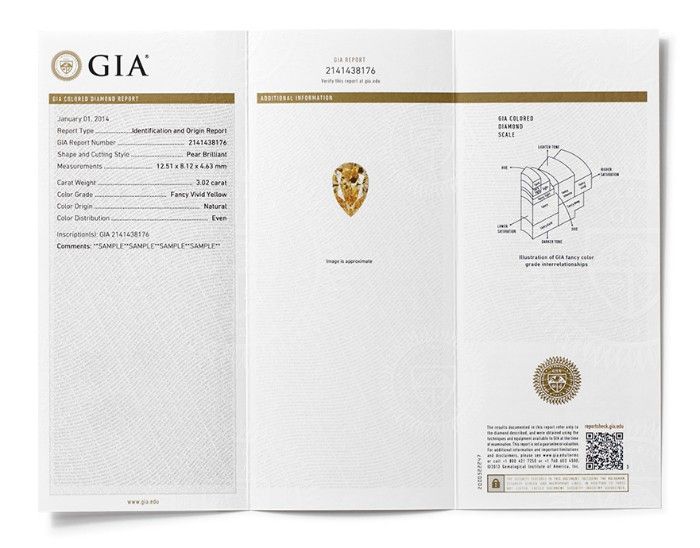
GIA Color Grading Scale
- Faint Yellow
- Very Light Yellow
- Light Yellow
- Fancy Light Yellow
- Fancy Yellow
- Fancy Intense Yellow
- Fancy Vivid Yellow
- Fancy Dark Yellow
- Fancy Deep Yellow
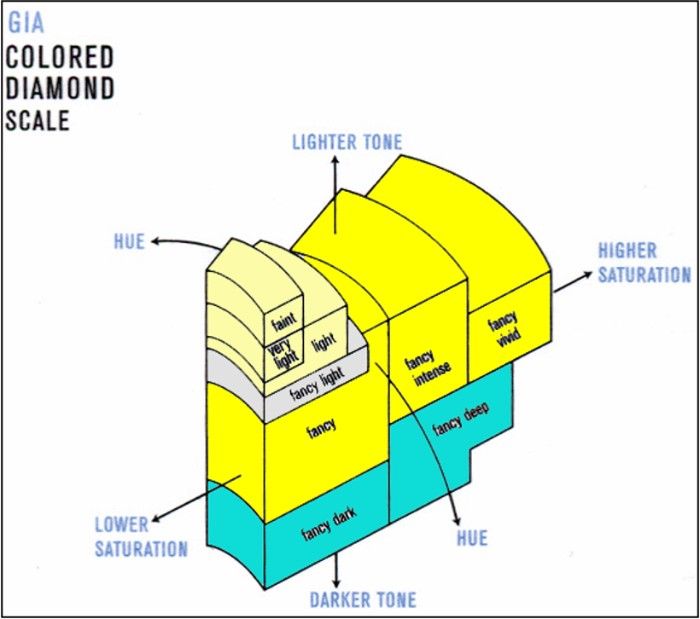
The term "canary yellow diamond" although popular, is a subjective description and not easy to measure, therefore dealers and gem labs defer to the descriptions provided by the GIA, the authority when it comes to fancy color diamonds.
Natural vs Treated Fancy Yellow Diamonds
Natural fancy yellow diamonds achieve their color through geological processes over millions of years. Treated or enhanced yellow diamonds, on the other hand, are subjected to high temperatures and pressures in controlled conditions to alter their color artificially.
While these treatments can improve the diamond's color, they significantly reduce its value compared to a natural fancy yellow diamond, but nonetheless can produce a beautiful yellow color, at a lower price.
Lab-Created Fancy Yellow Diamonds
Lab-created fancy yellow diamonds do exist, in fact they were much easier to produce for commercial purposes than colorless diamonds.
These synthetic diamonds have the same physical and chemical properties as natural diamonds but are created in a laboratory setting over a much shorter time period. While they offer a more affordable alternative, they lack the rarity and inherent value of naturally occurring fancy yellow diamonds.
The Luminous Allure of Fancy Yellow Diamonds:
The Tiffany Diamond: A Radiant Chapter in Jewelry History
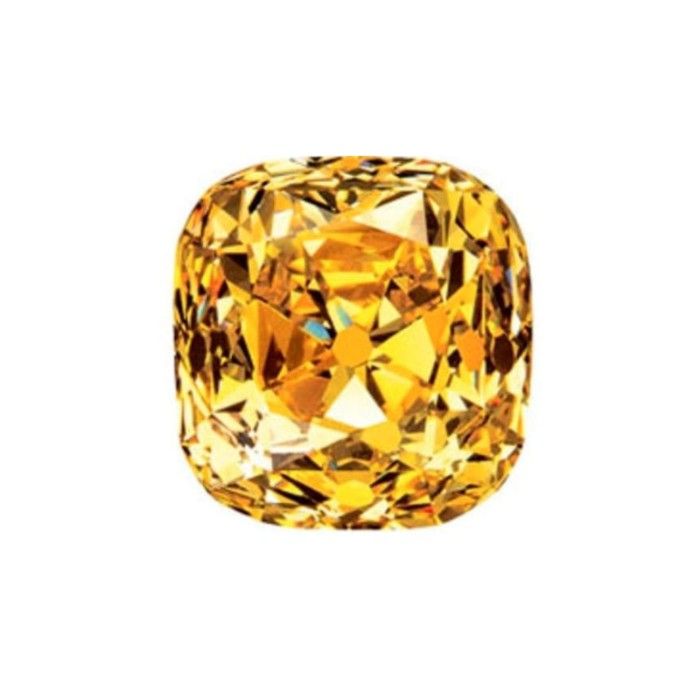
The Tiffany Diamond stands as one of the most iconic gemstones in the world, its history, and allure are intimately tied to the luxury brand that shares its name, Tiffany & Co.
Origins and Acquisition
The Tiffany Diamond's story begins in 1877, in the Kimberley mines of South Africa where the rough diamond, weighing a staggering 287.42 carats, was discovered. The following year, Charles Lewis Tiffany, founder of Tiffany & Co., purchased the stone and sent it to Paris. There, under the watchful eye of the company's chief gemologist, George Frederick Kunz, the diamond was cut into a cushion-shaped brilliant of just over 128 carats.
Key Characteristics
The Tiffany Diamond is famed for its exceptional size and mesmerizing color. Weighing 128.54 carats, the diamond boasts an unusual number of facets—82 in total—to maximize its brilliance.
Its color is categorized as "Fancy Yellow," a rare hue that contributes significantly to the diamond's overall value. The exact clarity grade of the Tiffany Diamond is VS2.
Cultural Impact and Notable Events
The Tiffany Diamond has played a pivotal role in shaping the culture and reputation of Tiffany & Co. Its acquisition demonstrated the company's commitment to sourcing the world's most extraordinary gemstones, solidifying Tiffany & Co.'s position as a leading luxury jewelry brand.
This remarkable gemstone has graced several high-profile events, including the 1893 World's Columbian Exposition in Chicago and the 1939/40 World's Fair in New York. It has also been reset multiple times to showcase the brand's evolving design ethos.
Famous Figures and the Tiffany Diamond
Throughout its history, the Tiffany Diamond has been worn by only four women.
Mrs. Mary Whitehouse wore it at the 1957 Tiffany Ball in Newport, Rhode Island. In 1961,
Audrey Hepburn donned the diamond for promotional photographs for "Breakfast at Tiffany's."
In 2019, Lady Gaga wore the jewel at the 91st Academy Awards.
Most recently, Beyoncé Knowles became the first Black woman and fourth woman ever to wear the diamond in a 2021 Tiffany & Co. campaign.
Viewing the Tiffany Diamond
Today, the Tiffany Diamond is typically on display at the Tiffany & Co. flagship store on Fifth Avenue in New York City, allowing the public to admire this extraordinary piece of jewelry history. However, it occasionally travels for special exhibitions, so it's always best to check ahead.
The Tiffany Diamond remains a shining testament to Tiffany & Co.'s legacy of luxury, quality, and craftsmanship. Its rich history, notable wearers, and breathtaking beauty continue to captivate jewelry enthusiasts worldwide.
The world of gemstones is full of enchanting tales and fascinating trivia, but few narratives are as compelling as those surrounding the top five most exquisite and famous fancy yellow diamonds in the world. These luminous gems have captivated humanity for centuries with their unique beauty and remarkable size.
The Incomparable Diamond
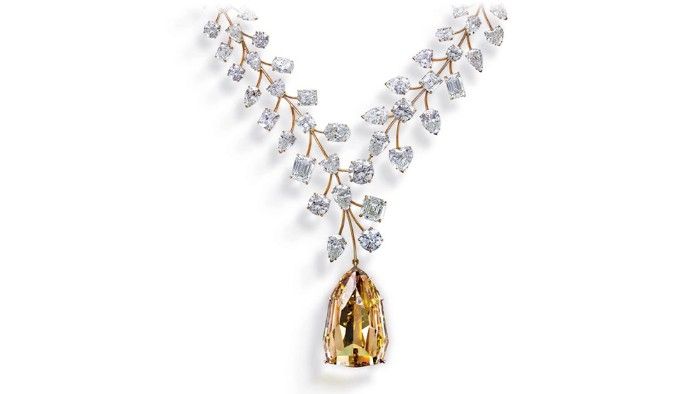
Frame last year Russia recommendationWeighing an astonishing 407.49 carats, The Incomparable Diamond holds the title of the largest Internally Flawless diamond ever graded by the Gemological Institute of America (GIA). Its color is classified as Fancy Deep Brownish Yellow. Discovered in the Democratic Republic of Congo, this magnificent stone was found in a pile of mining rubble by a young girl. Today, it's part of a private collection and its estimated value is over $20 million.
The Golden Canary
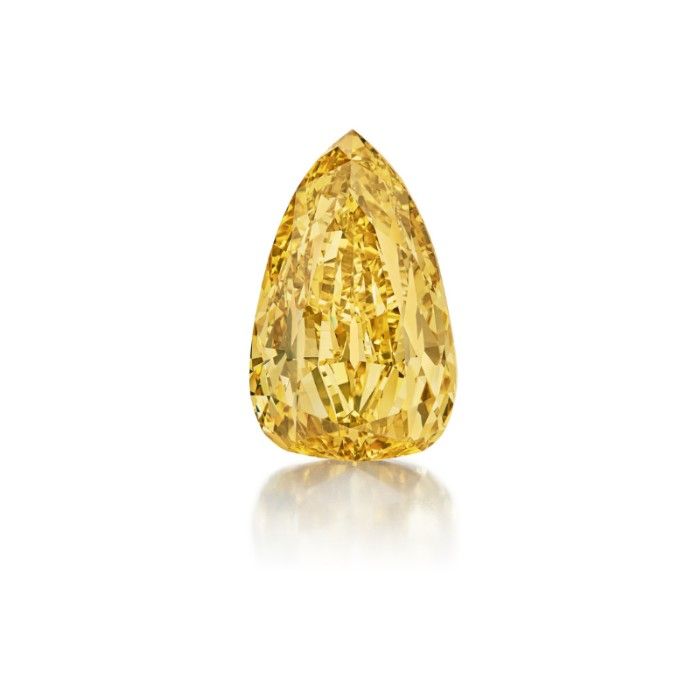
The Golden Canary Diamond is one of the purest yellow diamonds ever discovered. This radiantstone weighs 95.7 carats and is graded as a Fancy Vivid Yellow. The exact location of this diamond is unknown, but it has been featured in several exhibits around the world.
The Mouna Diamond
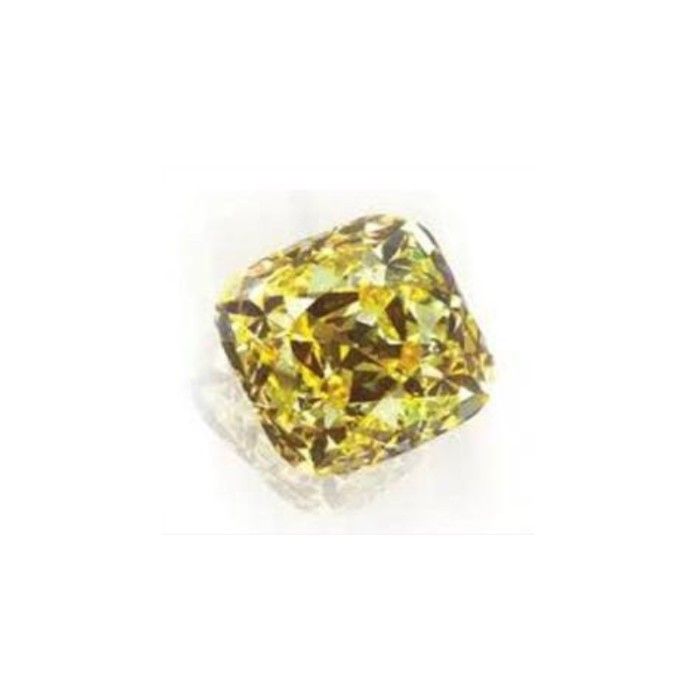
The Mouna Diamond, weighing 112.50 carats, boasts the title of being the largest Fancy Intense Yellow diamond. This cushion-cut diamond belonged to a Saudi Arabian Princess, Mouna Al-Sudairi, hence the name. The current location and value of the Mouna Diamond remain undisclosed.
Each of these dazzling yellow diamonds possesses a unique blend of size, color, and history that sets them apart from all others. They are not just gemstones; they are pieces of our world's rich history and a testament to nature's ability to create beauty under pressure. Their values, both monetary and historical, will continue to captivate gem enthusiasts for generations to come.
Natural Fancy Color Diamonds
Natural fancy-color diamonds are an important form of portable wealth. Millions of dollars can be literally carried around in your pocket.
Normally, jewelry is never recommended as an investment, no matter how expensive it may be. The only exceptions, however, are rare fancy color diamonds and in rare cases certain rare handmade prestige timepieces, such as Patek Philippe. So, if you are lucky enough to own a natural fancy color diamond, hold onto it, as it most probably will increase in value.
FAQs
What makes a yellow diamond "fancy"?
Fancy yellow diamonds have more nitrogen in their composition than colorless diamonds. The nitrogen absorbs blue light, making the stone appear yellow.
How are fancy yellow diamonds graded?
The Gemological Institute of America (GIA) grades fancy colored diamonds based on three attributes: hue (the actual color), tone (the relative lightness or darkness), and saturation (the color's strength or intensity). (See the chart of the grading scale above.)
What are the most popular shapes for fancy yellow diamonds?
Most fancy shapes such as pear shapes (or teardrops) cushion cuts, radiant cuts, step cuts, ovals, and modified brilliant cuts.
What is the difference between a natural and a treated fancy yellow diamond?
Natural fancy yellow diamonds achieve their color through geological processes over millions of years. Treated or enhanced yellow diamonds are subjected to high temperatures and pressures to alter their color artificially. Fancy-colored diamond documentation must disclose the origin of the color!
Do lab-created fancy yellow diamonds exist?
Yes, lab-created fancy yellow diamonds do exist. These synthetic diamonds have the same physical and chemical properties as natural diamonds but are created in a laboratory setting and have a lower value than a similar quality natural stone.
How much is a fancy yellow diamond worth?
The value of a fancy yellow diamond depends on its size, color intensity, clarity, and cut. On average, you can expect to pay $3,000-5,000 per carat for a yellow diamond of decent clarity and color. For a fancy vivid yellow diamond, the price can increase to $8,000-$16,000 per carat.
Should a fancy yellow diamond be set in yellow gold or white gold?
Fancy yellow diamonds can be set in either metal, it's a question of taste. Yellow gold prongs, that hold the yellow diamond are, however, the most popular.
What makes some yellow diamonds more valuable than others?
Factors such as color intensity, size, cut, and clarity can affect the value of a yellow diamond. Fancy vivid yellow diamonds, for example, are more valuable than fancy light yellow diamonds. Rarity and demand drive prices.
Is a fancy yellow diamond appropriate as an engagement ring?
Yes, a fancy yellow diamond is as appropriate as a colorless diamond for an engagement ring and in fact they are quite popular!
Can I wear my fancy yellow diamond jewelry every day?
While yellow diamonds are just as durable as colorless diamonds, like colorless diamonds they can still chip or crack if hit with enough force. Therefore, it is advisable to remove them during activities that may expose them to hard knocks or chemicals.
What documentation should I receive with my fancy yellow diamond?
Each fancy yellow diamond should be accompanied by a GIA Colored Diamond Report that indicates the color grade as well as the origin of the color.
The diamond should also be laser-engraved with the report number that can be seen under magnification. Other European gem labs also provide colored diamond grading reports.
Care
Regular gentle cleaning, proper storage, and protection from potential damage are key to maintaining the beauty of your fancy yellow diamond jewelry. In addition, be sure to have your jewelry cleaned and inspected professionally at least twice a year.
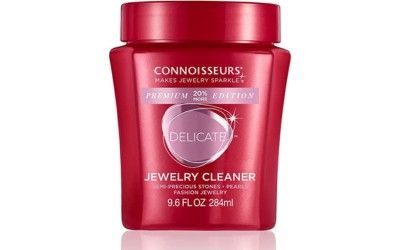
Conclusion
As you curate your personal collection of exquisite gemstones, consider the allure of the fancy yellow diamond. This unique, radiant stone is not just a testament to nature's artistry, but also an emblem of rarity and timeless elegance.
With its exceptional clarity, the fancy yellow diamond captures light and releases it in a breathtaking display of brilliance, adding a touch of glamour to any outfit. Each piece is a rare treasure, a distinct work of art that embodies sophistication and luxury.
As an owner, you're not just wearing a stunning piece of jewelry; you're carrying a fragment of the Earth's fascinating history. Invest in the fancy yellow diamond, for it's more than just a gemstone—it's a statement, an asset, and a captivating story waiting to be told.
Embrace the opportunity to own something truly extraordinary, and let the beauty and rarity of a fancy yellow diamond become an essential part of your precious gemstone collection.
Thank you for taking the time to read our article; we would love to hear from you, so please signup and leave your comments and questions below.
Happy Shopping!
Francesca de Granville, G.G. (GIA) F.G.A.
Related Articles you may also enjoy:
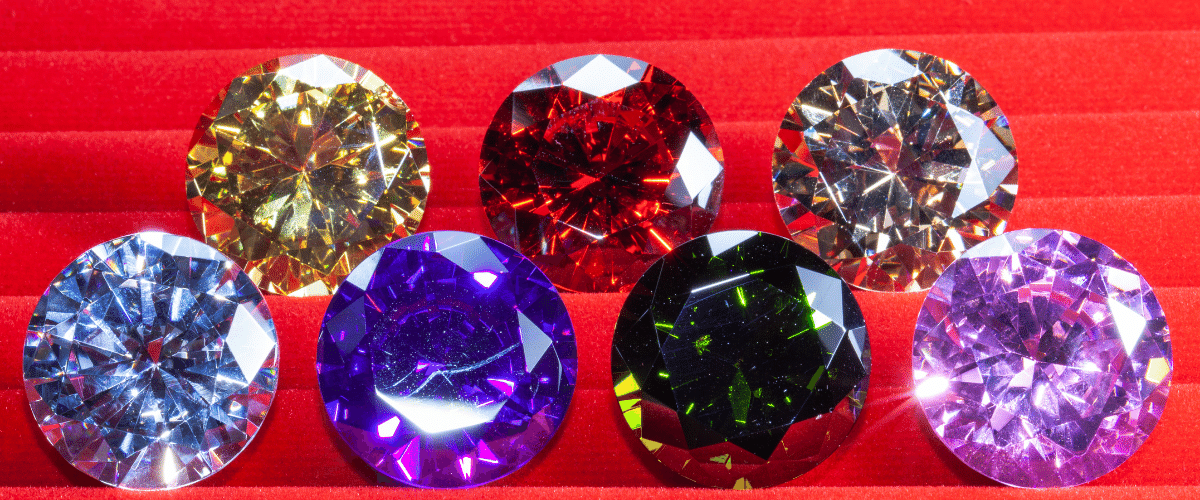
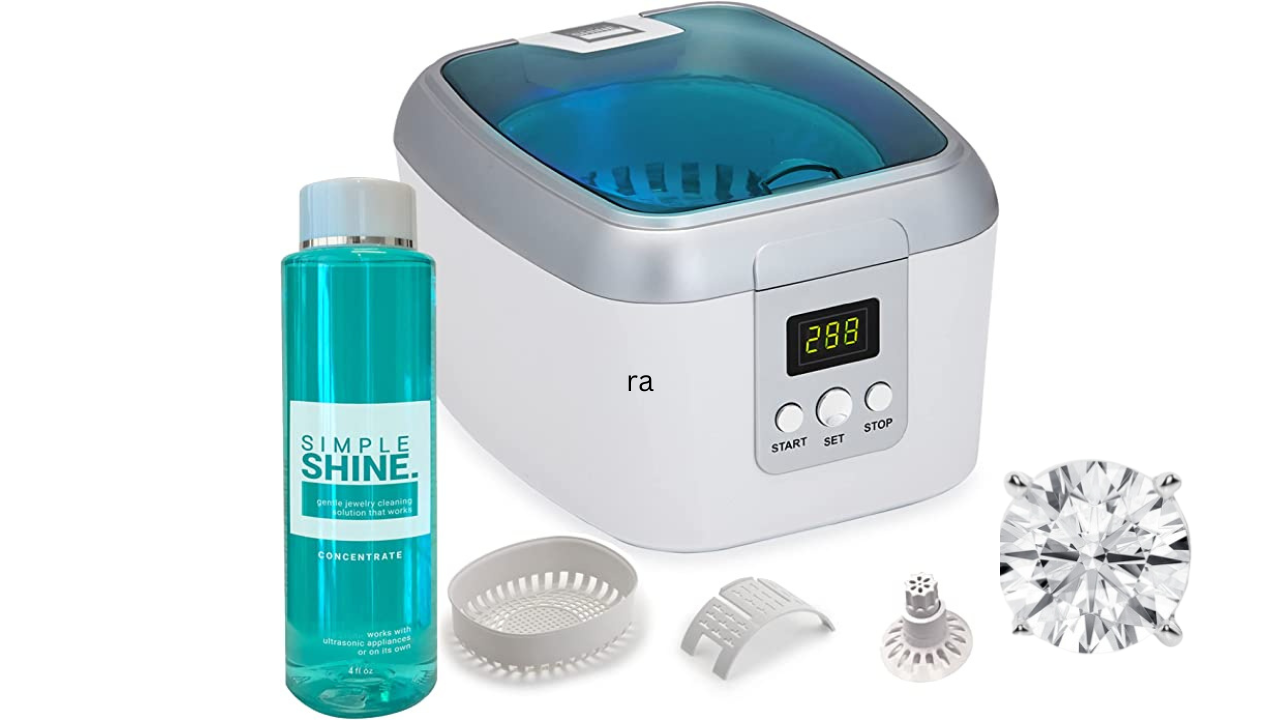

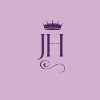

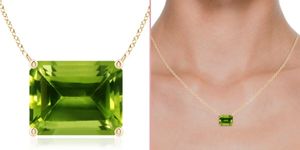
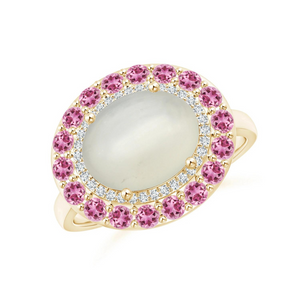
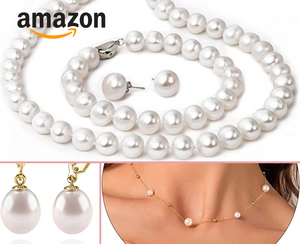


Member discussion